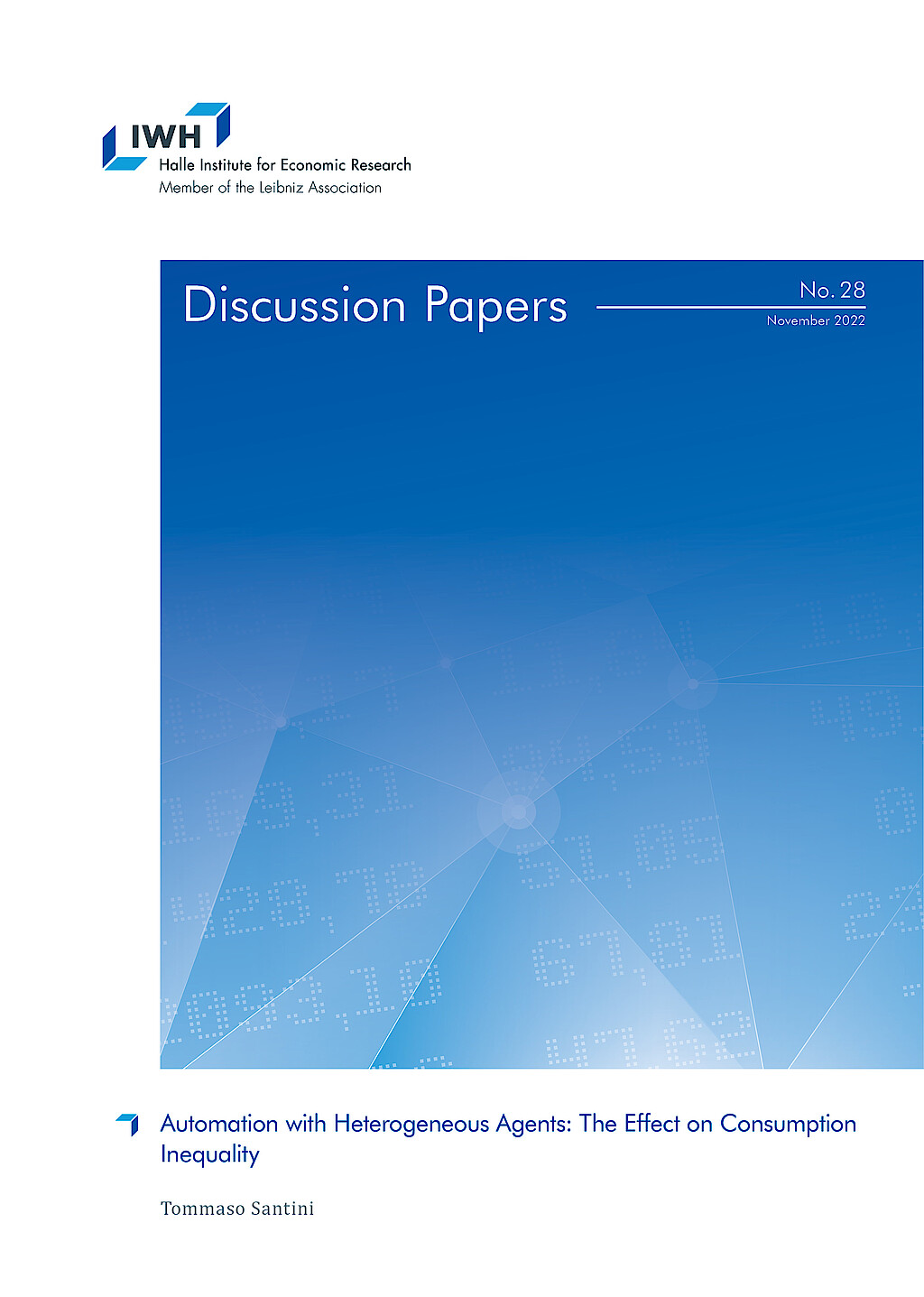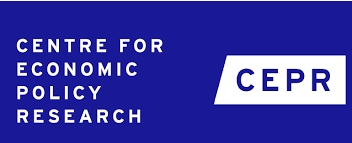The Economic Gap between East and West Germany
Professor Ufuk Akcigit, PhD, the winner of the Max Planck-Humboldt Research Award 2019 is running three research projects, the first of which is the most extensive.
Using new, comprehensive data from companies and their managers, the privatisation of former GDR businesses by the Treuhandanstalt will be investigated: To what extent did the qualifications of the selected managers or their networking with other decision-makers play a role? Using a benchmark model, the research group aims to ascertain how eastern German firms would be performing today, if exclusively the most talented entrepreneurs had been put in charge. In doing so, the research group will use an innovative approach that combines theory, empirics and computer simulations. Akcigit uses data at a micro level (firms, individuals, patents, ideas) in order to answer central macroeconomic questions with the help of a model estimation. This allows him to translate the microeconomic decisions of individuals into macroeconomic results, something considered one of the hardest tasks in Economics.
The second research project will analyse why highly innovative firms are established less frequently in eastern than in western Germany. In this context, it will also examine the role of migrants in economic growth and knowledge creation in Germany.
Finally, the third research project will look for reasons for the slowing productivity growth in Europe using the IWH’s CompNet data.
Workpackage 1: The Privatisation of Former GDR Businesses by the Treuhandanstalt
Workpackage 2: The Role of Migrants in Economic Growth and Knowledge Creation in Germany
Workpackage 3: Reasons for the Slowing Productivity Growth in Europe
Research Cluster
Economic Dynamics and StabilityYour contact

- Department Structural Change and Productivity
Refereed Publications

Taxation and the International Mobility of Inventors
in: American Economic Review, No. 10, 2016
Abstract
We study the effect of top tax rates on “superstar” inventors’ international mobility since 1977, using panel data on inventors from the US and European Patent Offices. We exploit the differential impact of changes in top tax rates on inventors of different qualities. Superstar inventors' location choices are significantly affected by top tax rates. In our preferred specification, the elasticity to the net-of-tax rate of the number of domestic superstar inventors is around 0.03, while that of foreign superstar inventors is around 1. These elasticities are larger for inventors in multinational companies. An inventor is less sensitive to taxes in a country if his company performs a higher share of its research there.

The Role of Information in Innovation and Competition
in: Journal of the European Economic Association, No. 4, 2016
Abstract
Innovation is typically a trial‐and‐error process. While some research paths lead to the innovation sought, others result in dead ends. Because firms benefit from their competitors working in the wrong direction, they do not reveal their dead‐end findings. Time and resources are wasted on projects that other firms have already found to be fruitless. We offer a simple model with two firms and two research lines to study this prevalent problem. We characterize the equilibrium in a decentralized environment that necessarily entails significant efficiency losses due to wasteful dead‐end replication and an information externality that leads to an early abandonment of the risky project. We show that different types of firms follow different innovation strategies and create different kinds of welfare losses. In an extension of the core model, we also study a centralized mechanism whereby firms are incentivized to disclose their actions and share their private information in a timely manner.

Taxation, Corruption, and Growth
in: European Economic Review, 2016
Abstract
We build an endogenous growth model to analyze the relationships between taxation, corruption, and economic growth. Entrepreneurs lie at the center of the model and face disincentive effects from taxation but acquire positive benefits from public infrastructure. Political corruption governs the efficiency with which tax revenues are translated into infrastructure. The model predicts an inverted-U relationship between taxation and growth, with corruption reducing the optimal taxation level. We find evidence consistent with these predictions and the entrepreneurial channel using data from the Longitudinal Business Database of the US Census Bureau. The marginal effect of taxation for growth for a state at the 10th or 25th percentile of corruption is significantly positive; on the other hand, the marginal effects of taxation for growth for a state at the 90th percentile of corruption are much lower across the board. We make progress towards causality through Granger-style tests and by considering periphery counties where effective tax policy is largely driven by bordering states. Finally, we calibrate our model and find that the calibrated taxation rate of 37% is fairly close to the model׳s estimated welfare maximizing taxation rate of 42%. Reducing corruption provides the largest potential impact for welfare gain through its impact on the uses of tax revenues.

Buy, Keep, or Sell: Economic Growth and the Market for Ideas
in: Econometrica, No. 3, 2016
Abstract
An endogenous growth model is developed where each period firms invest in researching and developing new ideas. An idea increases a firm's productivity. By how much depends on the technological propinquity between an idea and the firm's line of business. Ideas can be bought and sold on a market for patents. A firm can sell an idea that is not relevant to its business or buy one if it fails to innovate. The developed model is matched up with stylized facts about the market for patents in the United States. The analysis gauges how efficiency in the patent market affects growth.

Transition to Clean Technology
in: Journal of Political Economy, No. 1, 2016
Abstract
We develop an endogenous growth model in which clean and dirty technologies compete in production. Research can be directed to either technology. If dirty technologies are more advanced, the transition to clean technology can be difficult. Carbon taxes and research subsidies may encourage production and innovation in clean technologies, though the transition will typically be slow. We estimate the model using microdata from the US energy sector. We then characterize the optimal policy path that heavily relies on both subsidies and taxes. Finally, we evaluate various alternative policies. Relying only on carbon taxes or delaying intervention has significant welfare costs.
Working Papers

Climate Change Concerns and Information Spillovers from Socially-connected Friends
in: IWH Discussion Papers, No. 2, 2023
Abstract
This paper studies the role of social connections in shaping individuals’ concerns about climate change. I combine granular climate data, region-level social network data and survey responses for 24 European countries in order to document large information spillovers. Individuals become more concerned about climate change when their geographically distant friends living in sociallyconnected regions have experienced large increases in temperatures since 1990. Exploring the heterogeneity of the spillover effects, I uncover that the learning via social networks plays a central role. Further, results illustrate the important role of social values and economic preferences for understanding how information spillovers affect individual concerns.

Automation with Heterogeneous Agents: The Effect on Consumption Inequality
in: IWH Discussion Papers, No. 28, 2022
Abstract
In this paper, I study technological change as a candidate for the observed increase in consumption inequality in the United States. I build an incomplete market model with educational choice combined with a task-based model on the production side. I consider two channels through which technology affects inequality: the skill that an agent can supply in the labor market and the level of capital she owns. In a quantitative analysis, I show that (i) the model replicates the increase in consumption inequality between 1981 and 2008 in the US (ii) educational choice and the return to wealth are quantitatively important in explaining the increase in consumption inequality.

The Value of Firm Networks: A Natural Experiment on Board Connections
in: SAFE Working Papers, No. 269, 2022
Abstract
We present causal evidence on the effect of boardroom networks on firm value and compensation policies. We exploit a ban on interlocking directorates of Italian financial and insurance companies as exogenous variation and show that firms that lose centrality in the network experience negative abnormal returns around the announcement date. The key driver of our results is the role of boardroom connections in reducing asymmetric information. The complementarities with the input-output and cross-ownership networks are consistent with this channel. Using hand-collected data, we also show that network centrality has a positive effect on directors’ compensation, providing evidence of rent sharing.

Automation, Globalization and Vanishing Jobs: A Labor Market Sorting View
in: IZA Discussion Paper, No. 13267, 2020
Abstract
We show, theoretically and empirically, that the effects of technological change associated with automation and offshoring on the labor market can substantially deviate from standard neoclassical conclusions when search frictions hinder efficient assortative matching between firms with heterogeneous tasks and workers with heterogeneous skills. Our key hypothesis is that better matches enjoy a comparative advantage in exploiting automation and a comparative disadvantage in exploiting offshoring. It implies that automation (offshoring) may reduce (raise) employment by lengthening (shortening) unemployment duration due to higher (lower) match selectivity. We find empirical support for this implication in a dataset covering 92 occupations and 16 sectors in 13 European countries from 1995 to 2010.

The Value of Firm Networks: A Natural Experiment on Board Connections
in: CEPR Discussion Papers, No. 14591, 2020
Abstract
This paper presents causal evidence of the effects of boardroom networks on firm value and compensation policies. We exploit exogenous variation in network centrality arising from a ban on interlocking directorates of Italian financial and insurance companies. We leverage this shock to show that firms whose centrality in the network rises after the reform experience positive abnormal returns around the announcement date and are better hedged against shocks. Information dissemination plays a central role: results are driven by firms that have higher idiosyncratic volatility, low analyst coverage, and more uncertainty surrounding their earnings forecasts. Firms benefit more from boardroom centrality when they are more central in the input-output network, hence more susceptible to upstream shocks, when they are less central in the cross-ownership network, or when they have low profitability or low growth opportunities. Network centrality also results in higher directors' compensation, due to rent sharing and improved executives' outside option, and more similar compensation policies between connected firms.










